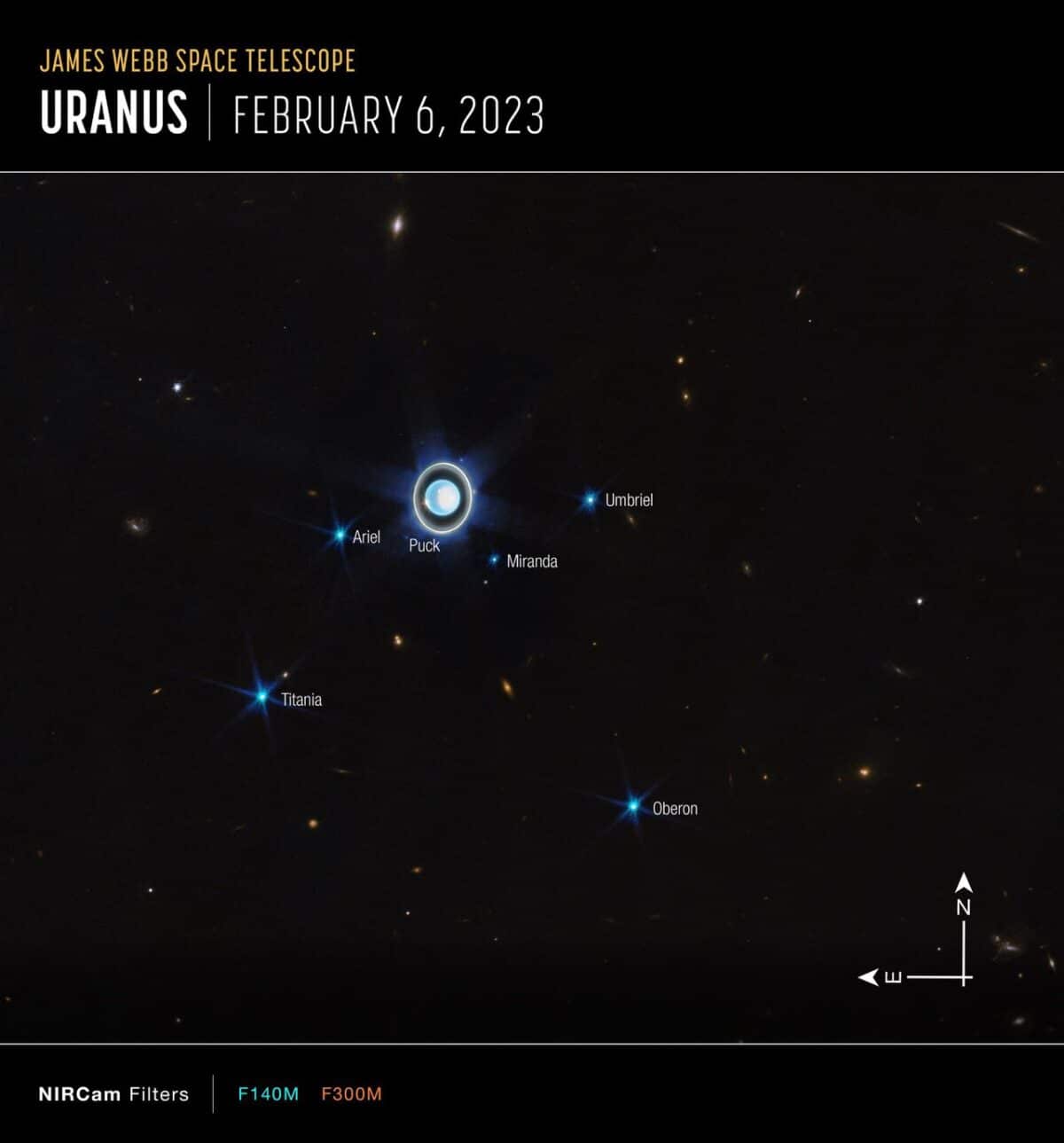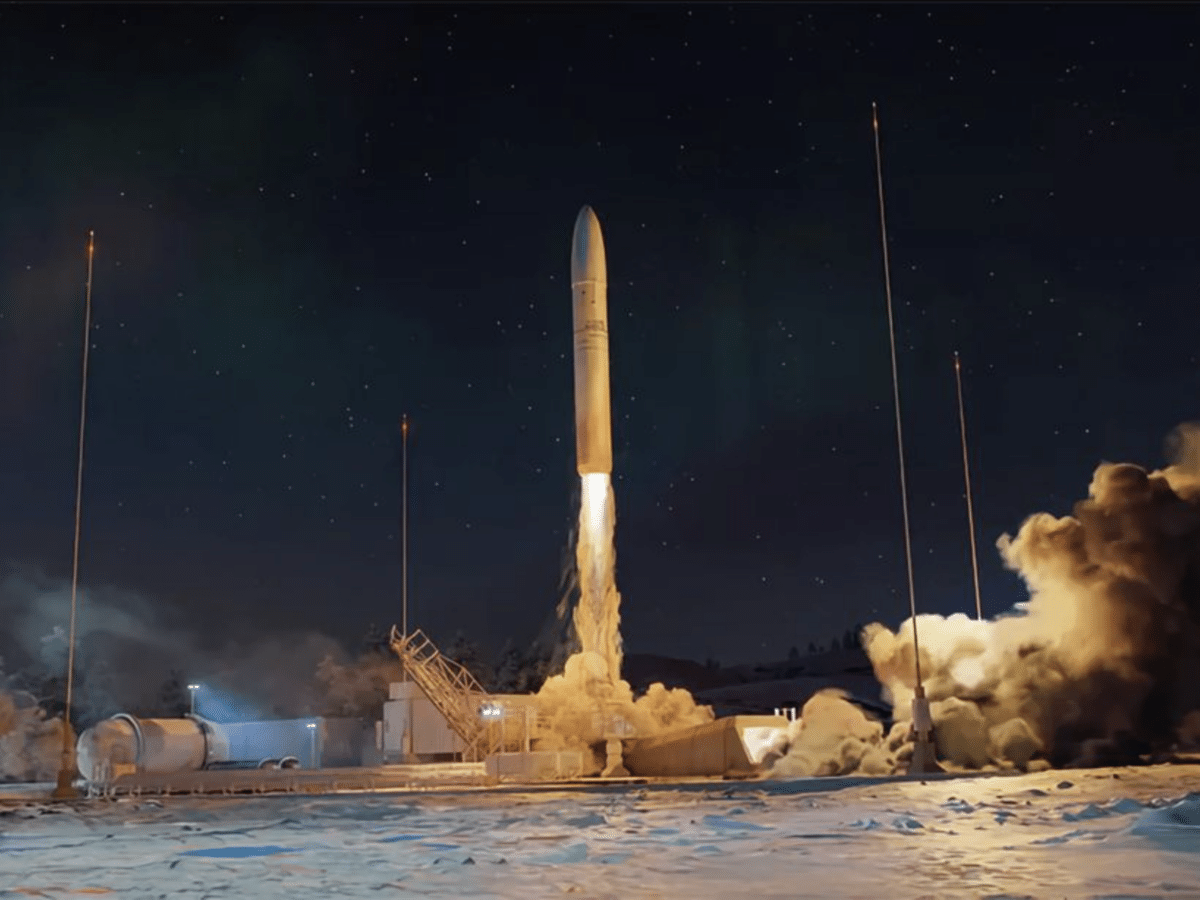The James Webb Space Telescope (JWST) has taken a look at another planet in our own solar system and this time sent back images of Uranus, the gas and ice giant that has a mass equivalent to about 14.5 of our own Earth.

In JWST’s image of Uranus, the telescope captured 11 of Uranus’ 13 known rings. Among other things, the two dimmest rings have been photographed. These have only been captured in images twice before, once by the Voyager 2 spacecraft that passed the planet in 1986, and once by the Keck Observatory in Hawaii that photographed the planet in 2004.
The images were taken with JWST’s infrared camera, NIRCam, which used two filters at 1.4 and 3.0 microns. The images shown above and below were then colorized in blue and orange for the human eye to perceive them. NASA writes about the images:
Uranus has 13 known rings and 11 of them are visible in this Webb image. Some of these rings are so bright with Webb that when they are close together, they appear to merge into a larger ring. Nine are classed as the main rings of the planet, and two are the fainter dusty rings (such as the diffuse zeta ring closest to the planet) that weren’t discovered until the 1986 flyby by Voyager 2.
In the image above, an enlarged image of Uranus from JWST is visible, and below, the planet is seen along with six of its 27 known moons. In the background, other celestial bodies are visible, including several distant galaxies. JWST has previously delivered fantastic images of both Jupiter and Neptune.







